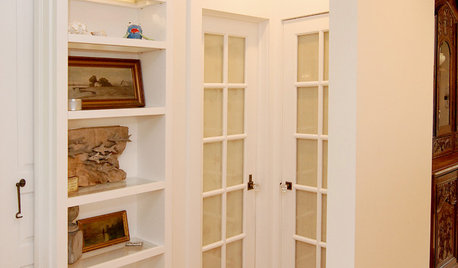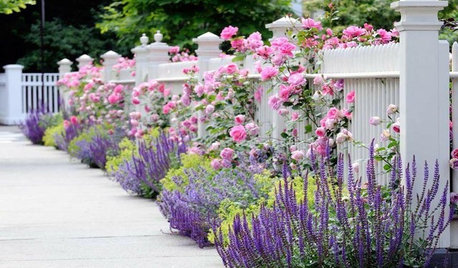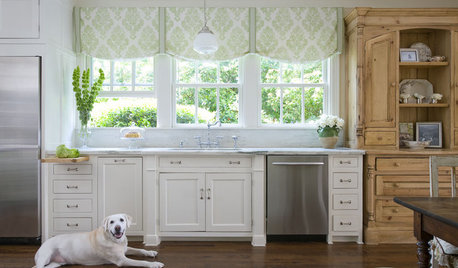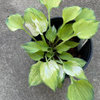New to the Hosta Forum. Just an intro and looking for some advice
Erin Farr (Niagara Zone 6)
11 years ago
Featured Answer
Sort by:Oldest
Comments (59)
gogirlterri
11 years agolast modified: 9 years agoJon 6a SE MA
11 years agolast modified: 9 years agoRelated Discussions
hello , intro and hosta question
Comments (12)The largest Canadian mail order source (in my experience) was Hosta Choice. Last year both of the owners died. They have not updated their web site so I don't know if they will be shipping anything this year. I am on the west coast so I don't know if that makes any difference in the cost but Naylor Creek in Washington state was my other "main hosta nursery". I also ordered from Hosta Geek last year and will do so again. They are much lower priced but you do get smaller plants. This year for the first time I was going to look into ordering from "Wade". I don't know what they charge to send to Canada but they have a huge selection. Their site hasn't been updated yet either. Good Luck, McTavish...See Morenew to this forum but familiar with hostas...
Comments (4)A lovely tranquil setting and an apt summary of hosta virtues. How wonderful that those castoffs found a good home. You are at great advantage over many here in that you can rearrange them to your heart's content without the help of 3 husky teenage boys and a snow sled. ;) Thank you for sharing....See MoreNew to Hostas - Need some advice/recommendations
Comments (9)welcome in theory.. hosta are ONLY shade tolerant .... so .. in theory.. sun should be ok ... but the further you go south.. there is the heat... and the night time temps .... which might be worse than the sun.. if you get my drift ... hosta transpire.. sweat .. give off moisture.. when they do that MORE than they take in.. they start looking ratty ... so ... how much water you provide is highly important ... in theory .. FULL SUN.. is anything more than 8 hours ... the worst for hosta is from about 2 pm thru 6pm ... sun during the high heat of the day is when they give off more water than they take in .. so if you can provide just a few hours of shade ... you will be ahead of the game ... hosta in drought and heat.. can go dormant in response ... and it would be those.. that should be moved in the future.. should the conditions not be right ... in full sun.. even with damage... they will most likely grow faster.. fuller.. and shorten the length to maturity ... but they wont be pretty ... but they will usually not die .... except in the most extreme circ's ... some will even live on the driveway.. with barely any soil for a year or two ... but those are not the foo foo hosta ... they are the old workhorses ... so which you choose is important ... the bottom line.. IMHO ... plant them.. and if they dont look happy.. move them ..... ken...See MoreIntro for happy new forum follower
Comments (16)Yep, Luvs. I'm still your friend. Tho quite jealous at how naturally you took to the art of setting wonderful tables. LOL. And you must mean my kitchen table that sits in front of the bay window to the backyard. I really haven't a clue why dishes scare me so much. Other than I'm over 60 and never played with them before. My adversion to cooking and kitchens is well known, tho I do manage to feed my Dad and husband. LOL. Who both like plain and simple things, thank heavens. But no one in my family did big entertaining or fancy settings, and growing up I spent every moment I could with animals and outside. Still prefer that. Tho I will be "outside deprived" now till end of OCT. Its over 110 here and will get worse. I have set out some dishes and tried to figure out how to make a real tablesetting, but I just am clueless to make it look right. Don't you remember my pathetic attempt at the teasetting party we had here? Arrrggghhh. I'm not scared of criticism, and everyone is super nice anyway. In fact, I'd WELCOME advice and comments!!! I would NEED them. I just need to find a little courage to try and post a picture to get that help from all of you. Now I'm stuck inside, maybe I'll do so. hugs, Karen...See Morehostafreak
11 years agolast modified: 9 years agoken_adrian Adrian MI cold Z5
11 years agolast modified: 9 years agogogirlterri
11 years agolast modified: 9 years agoin ny zone5
11 years agolast modified: 9 years agoErin Farr (Niagara Zone 6)
11 years agolast modified: 9 years agogogirlterri
11 years agolast modified: 9 years agodon_in_colorado
11 years agolast modified: 9 years agoken_adrian Adrian MI cold Z5
11 years agolast modified: 9 years agoErin Farr (Niagara Zone 6)
11 years agolast modified: 9 years agodougald_gw
11 years agolast modified: 9 years agoken_adrian Adrian MI cold Z5
11 years agolast modified: 9 years agoUser
11 years agolast modified: 9 years agodougald_gw
11 years agolast modified: 9 years agoErin Farr (Niagara Zone 6)
11 years agolast modified: 9 years agogogirlterri
11 years agolast modified: 9 years agoUser
11 years agolast modified: 9 years agobkay2000
11 years agolast modified: 9 years agohosta_freak
11 years agolast modified: 9 years agoin ny zone5
11 years agolast modified: 9 years agogogirlterri
11 years agolast modified: 9 years agoken_adrian Adrian MI cold Z5
11 years agolast modified: 9 years agobrucebanyaihsta
11 years agolast modified: 9 years agoJon 6a SE MA
11 years agolast modified: 9 years agoUser
11 years agolast modified: 9 years agoErin Farr (Niagara Zone 6)
11 years agolast modified: 9 years agobrucebanyaihsta
11 years agolast modified: 9 years agohosta_freak
11 years agolast modified: 9 years agogogirlterri
11 years agolast modified: 9 years agoken_adrian Adrian MI cold Z5
11 years agolast modified: 9 years agobrucebanyaihsta
11 years agolast modified: 9 years agoken_adrian Adrian MI cold Z5
11 years agolast modified: 9 years agoUser
11 years agolast modified: 9 years agobeverlymnz4
11 years agolast modified: 9 years agoErin Farr (Niagara Zone 6)
11 years agolast modified: 9 years agohostahillbilly
11 years agolast modified: 9 years agobrucebanyaihsta
11 years agolast modified: 9 years agogogirlterri
11 years agolast modified: 9 years agoken_adrian Adrian MI cold Z5
11 years agolast modified: 9 years agoMadPlanter1 zone 5
11 years agolast modified: 9 years agoken_adrian Adrian MI cold Z5
11 years agolast modified: 9 years agoalmosthooked zone5
11 years agolast modified: 9 years agogogirlterri
11 years agolast modified: 9 years agoirawon
11 years agolast modified: 9 years agoUser
11 years agolast modified: 9 years agoErin Farr (Niagara Zone 6)
11 years agolast modified: 9 years agoofionnachta
11 years agolast modified: 9 years agoSteve Massachusetts
11 years agolast modified: 9 years ago
Related Stories

LIFEGet the Family to Pitch In: A Mom’s Advice on Chores
Foster teamwork and a sense of ownership about housekeeping to lighten your load and even boost togetherness
Full Story
DECORATING GUIDESRevive Your Room’s Look in Just 5 Steps
Not in total-makeover mode? Give your space polish and a pulled-together look with this easily doable plan
Full Story
HOUSEPLANTSPlay Up Some Fiddleleaf Figs for a Lively Indoor Tune
Strike a dramatic chord in a minimalist scene or a country note in a rustic setting — fiddleleaf fig plants harmonize with any style
Full Story
DECORATING GUIDESDitch the Rules but Keep Some Tools
Be fearless, but follow some basic decorating strategies to achieve the best results
Full Story
WORKING WITH PROSWorking With Pros: When You Just Need a Little Design Guidance
Save money with a design consultation for the big picture or specific details
Full Story
REMODELING GUIDESHow to Size Interior Trim for a Finished Look
There's an art to striking an appealing balance of sizes for baseboards, crown moldings and other millwork. An architect shares his secrets
Full Story
LANDSCAPE DESIGN4 Gorgeous Garden Looks for a Narrow Planting Strip
Make a strong design statement in an unexpected place with these ideas for perimeter plantings, pocket gardens and more
Full Story
WINDOW TREATMENTSThe Key to Designer-Look Window Treatments
Learn the one thing that will make your curtains suffer if you get it wrong — and how to get it right
Full Story
NATIVE PLANTS5 Ways to Keep Your Native Plant Garden Looking Good All Year
It’s all about planning ahead, using sustainable practices and accepting plants as living organisms
Full Story
LIVING ROOMSRoom of the Day: Newlyweds Embrace a Colorful New Look
Bright accessories and rich textures amp up a bland living room in a couple’s first home together
Full Story






ken_adrian Adrian MI cold Z5